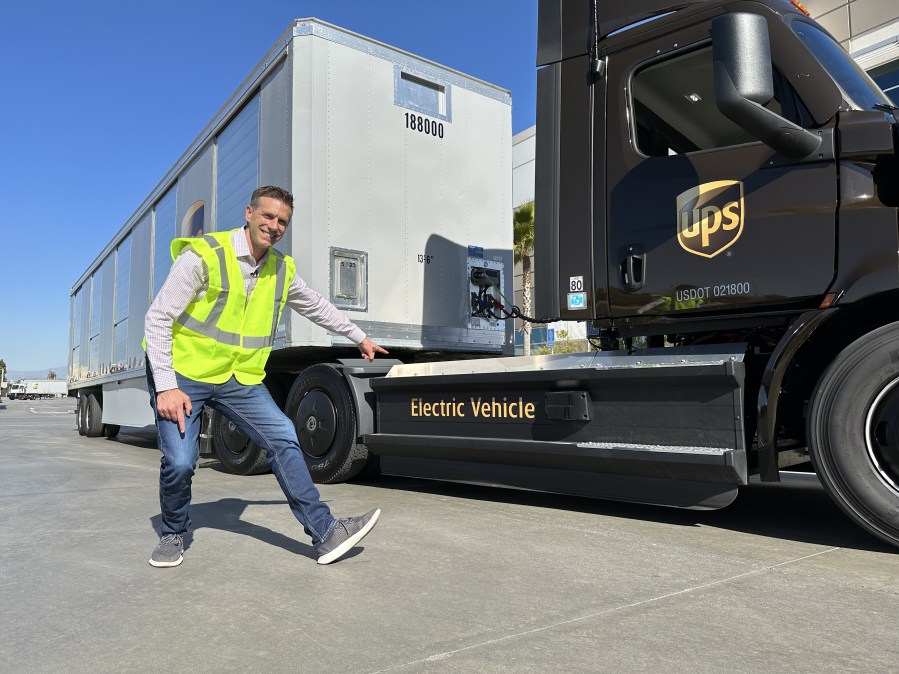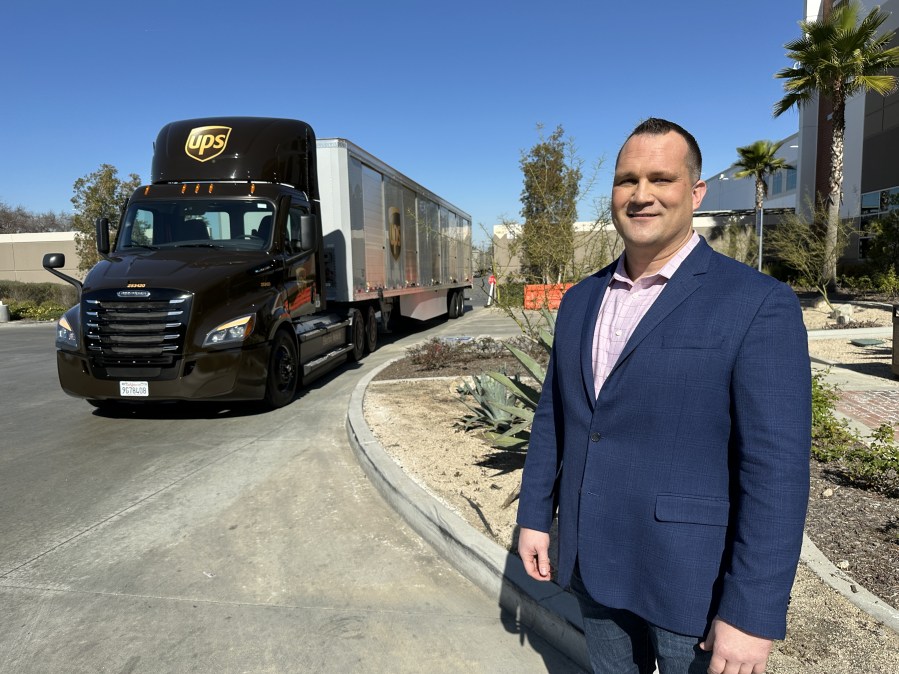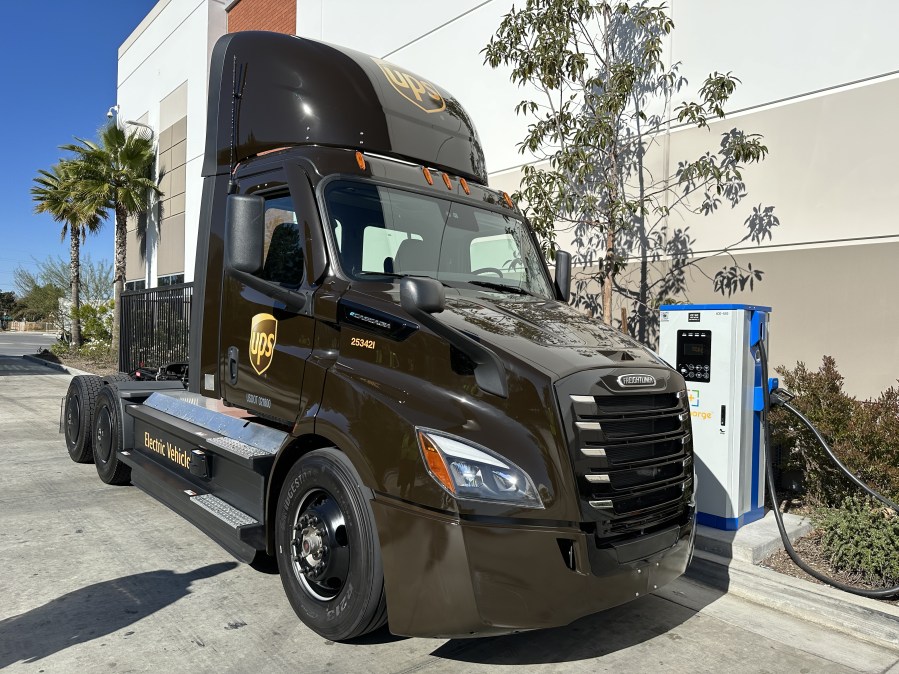UPS has taken delivery of it’s first all-electric semi truck, the eCascadia Freightliner. It’s now in operation at the company’s Compton facility.
It might not be a Tesla, but according to 30+ year driver Sal Larios, it sure drives like one.
“[There’s] no radiator water, none of that stuff anymore,” said Larios, one of a handful of operators trained to drive the new rig. He did note that the steering wheel has less resistance, which takes some getting used to.

The truck is the first of an initial delivery of ten. They’ll be used to move items across shorter distances, from warehouse to warehouse, as opposed to, say, cross country.
“It’s been part of our mission statement to improve the air in the communities that we serve and also move towards a more sustainable future,” said Ryan Bankerd, UPS Corporate Director of Automotive Sustainability.
The Freightliner eCascadia, made by Daimler Truck, can go up to 250 miles on a charge. Last year, I got to take a ride in the prototype.
The truck takes about an hour and a half to recharge. UPS has already installed one fast charger at it’s facility and has plans for more.

I took the truck for a spin on the streets around the Compton facility and inside it’s smooth, quiet and comfortable. There’s no diesel smell and no vibration.
It barely feels like we’re pulling 15,000 pounds, which is just an empty air container. The truck can handle up to 80,000 pounds, which is on par with a diesel semi.
“It just turns like butter, like nothing,” said Larios as he took turns with ease.
To get some perspective on the UPS move, I chatted with James Moore, a professor emeritus at USC. He taught civil and industrial engineering for decades.
“I think that there is a will both on the part of the public and the private sector to make this transition,” said Moore. “Progress will be made but the initial progress will be incremental. Does the entire system have to be rethought to make this work? Yes,” said Moore.
He says these trucks aren’t ready to go cross country just yet, so this is a good way to use them right now while the technology evolves.
“It’s a logical incremental step forward given the way UPS’s activities are organized,” said Moore.

UPS’s first all electric semi joins a growing fleet of more than 13,000 alternate fuel and advanced technology vehicles they have on the road. Their goal is to use 40% alternative fuel vehicles in their ground operations by 2040.
“This truck really solves that middle mile. That is really hard to decarbonize,” concluded Bankerd.








































